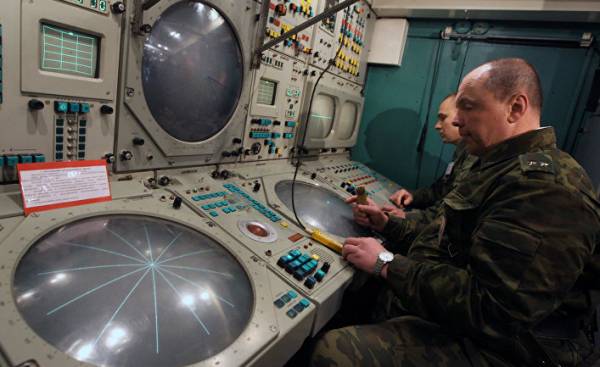
In light of increasing tensions in our region, the entry into the airspace of Belarus light aircraft from Lithuania could worsen relations between the two countries. What could be behind this incident? How did the Belarusian air defense?
April 19, a plane flying from Lithuania, went deep into the territory of Belarus on distance up to 8 km and then making a u-turn and went out of her airspace.
The plane that violated the state border, were identified as civil aircraft, said the commander of the air forces and air defence troops of Belarus Oleg Dvigalet. Therefore, he explained, in accordance with the norms of international air law and legislation of the Belarus power measures were not taken, although the violation occurred near the construction of the Belarusian NPP.
“I want to believe that it was unintentional pilot error, not a specially planned action,” said Dvigalet. However, he added, if such cases happen again, the military “will be compelled to use force and sanctions”.
On 22 April the foreign Ministry of Belarus, the Lithuanian Ambassador Andrius Pulokas was handed a note of protest about the violation of the border. As told journalists the head of Ministry of foreign Affairs of Lithuania Linas Linkevičius, the answer to note would be prepared after investigation of circumstances of incident.
Meanwhile, the Deputy Director of the civil aviation Administration of Lithuania Alvydas, Shumskas expressed the idea that the cause of violation of the border was the carelessness of the pilot, a citizen of Denmark. Describing the advantages of his plane to a potential buyer from Lithuania, a pilot, say, a little swing and accidentally flew into Belarusian territory.
Memories of the “Teddy troopers”
This incident recalled a similar episode five years ago. We are talking about the violation of the air border of Belarus on 4 July 2012 a light piston aircraft Jodel D113, which was piloted by Tomas Mazetti of Swedish PR firm Studio Total.
This plane not only reached the vicinities of Minsk, but also dropped paratroopers from Teddy bears. The incident caused a loud public outcry and, consequently, draw conclusions on the part of the President. Their posts then lost the head General of the state border Committee Igor raczkowski and the commander of the air force and air defense forces General Dmitry Pakhmelkin.
This kind of event (though not as controversial) occurred in the Lithuanian direction. Smugglers and lovers of thrills at low altitude crossed the border, and some of these flights have not been recorded either by air defense forces of Belarus or its border guard service. For example, in 2005 in the border forest mushroom hunters found the crashed civilian plane with human remains.
The fact that flying targets are hard to detect by radar — as expressed by the experts, “due to the influence of inhomogeneities of the underlying surface”.
This problem exists ever since the radar, and in varying degrees, common to all air defense systems. Search methods of detecting low-flying targets today, it has become especially important due to the fact that has greatly expanded the use in combat of unmanned aerial vehicles (reconnaissance and attack) cruise missiles and guided aerial bombs, specifically designed for action near earth.
But if it would threaten the nuclear power plants?
The solution to the problem of detecting low-flying manned and unmanned aerodynamic vehicles should be considered in the context of the protection of vitally important objects of terrestrial civil and military infrastructure from air terrorism.
It is highly vulnerable to attacks from the air are the storage of flammable and reactive materials, arsenals and ammunition depots, thermal and hydroelectric power stations. Especially catastrophic are the consequences of air attack on nuclear power plants. This threat will become very real for Belarus after commissioning of a nuclear power plant in Ostrovets.
The events of 11 September 2001 in the United States is clearly demonstrated that the terrorist threat from the air.
In this regard the danger is not only liners, but also light, small and miniature aircraft, hang gliders and other aircraft of this kind. They can be used to deliver spies or discharge of explosive devices. In recent years, the rapidly increasing production of unmanned aircraft, the payload of which can reach hundreds of pounds, and the minimum flying height is 10-20 m.
Their use have sharply reduced the efficiency of existing air defense systems and require a fundamentally new technical solutions to detect such air targets. The current means can not be considered quite effective, as evidenced by aerial drug trafficking from Colombia to the United States.
Lessons Teddy troopers. Minsk worked on the bugs, but…
Unimpeded flight over Belarus Swedish little airplane and reset them landing Teddy bears over the capital showed the country’s leadership that the Belarusian air force and air defense forces also is unable effectively to counter low-flying aircraft.
One of the evidence that the lesson learned July 4, 2012, went in store, was the creation and staging 5 January 2016, on combat duty on the territory of Minsk region the newly formed unit of radio engineering armies (RTV) — 3-th radar node. This event marked the completion of the Minsk air defense district. Created a unified system of radar reconnaissance around the capital.
Radiotechnical troops equipped with new equipment
It is worth noting that the bulk of the equipment with which the personnel of the radar unit were on combat duty, made up of modern developments of Belarusian military-industrial complex.
This number includes the low-level radar station (RLS) “Rosa-RB” annular phased array, created using the most modern electronic components Belarusian JSC “CB “Radar” and adopting in December 2012.
This radar is designed specifically to detect low-flying targets. Working in automatic mode, it is able to detect and identify air targets at heights from one meter above the ground within a radius of 50 km, putting not only manned but also unmanned aerial vehicles. The location of the station “Rosa-RB” to the enemy is difficult to establish.
According to experts, the adoption of a sufficient number of such radars into service of the Belarusian RTV will allow you to create a continuous low-altitude radar field around the perimeter of external borders of Belarus. Which in turn gives you the opportunity, regardless of the human factor to detect any object, violating protected airspace, and give target designation anti-aircraft missile units.
In modern conditions, increasingly represent a threat to aircraft for military purposes, made on technology Stealth. To resist them is the Belarusian two-coordinate (azimuth + range) radar radial review “Vostok-D” detection range is 360 km, It is absolutely original development of the same “CB “Radar”.
The sky over Belarus was closed from the new “soft landings”
Repeatedly reduced through the use of modern element base, the volume of electronic equipment allows you to place “Vostok-D” on one chassis with high cross, which gives the station additional mobility and stealth. The clotting time-station deployment in comparison with analogues reduced by more than 10 times (for calculation of two people it is about 8-10 minutes).
In addition to super specialties in air defense of Belarus uses the already known models of radar equipment, past deep modernization by domestic manufacturers, such as P-18БМА, 19Ж6М, altimeter PRV-16B. New and upgraded radars are tied into a single information network, forming a full three-axis radar system.
In parts RTV a complete replacement stations and automated control systems of the Soviet production. In this process, the Belarusian KB, organizations and plants developed and supplied to troops automated control systems “Bor”, “Polyana-RB”, “RIF-R”, “Reef”.
This equipment has greatly enhanced the effectiveness of combat duty. Reduced time in gathering and processing of information, improved quality of decisions taken by commanders to improve the accuracy of target designation for antiaircraft missile systems and aircraft.
Park tools destroy low-flying targets in the last five years has also been replenished with modern samples. This list was purchased from Russia, anti-aircraft missiles short range “tor-M2K” and combat training aircraft Yak-130.
Casual vagrant or probing?
And costs, and the efforts were not wasted: on 19 April, the intruder all the while was over the territory of Belarus was under the control of air defense of the country.
Note that military experts (both independent and representing state agencies) are sceptical about the version about casual vagrant to the us the Danish aircraft from Lithuania. Experts do not exclude intentional penetration with the goal to reveal the configuration of the Belarusian air defense on that border.
This airplane has provoked intense work of not only radar standby mode, but the radar air defence systems. That allowed the electronic intelligence on the other side are the characteristics of these radars, but also to determine their location.
Experts do not accidentally connect the last incident with the “Teddy landing”. If episode 4 Jul 2012 revealed holes in the radar field of defense of Belarus, the action 19 APR 2017 may be allowed to determine changes in it over the past five years and to test the reaction of the staff.
We can also assume that after exhausted the diplomatic and informational factors impeding the construction of nuclear power plants, someone wanted to hint to the Belarusian leadership for its vulnerability to the terrorist threat.







